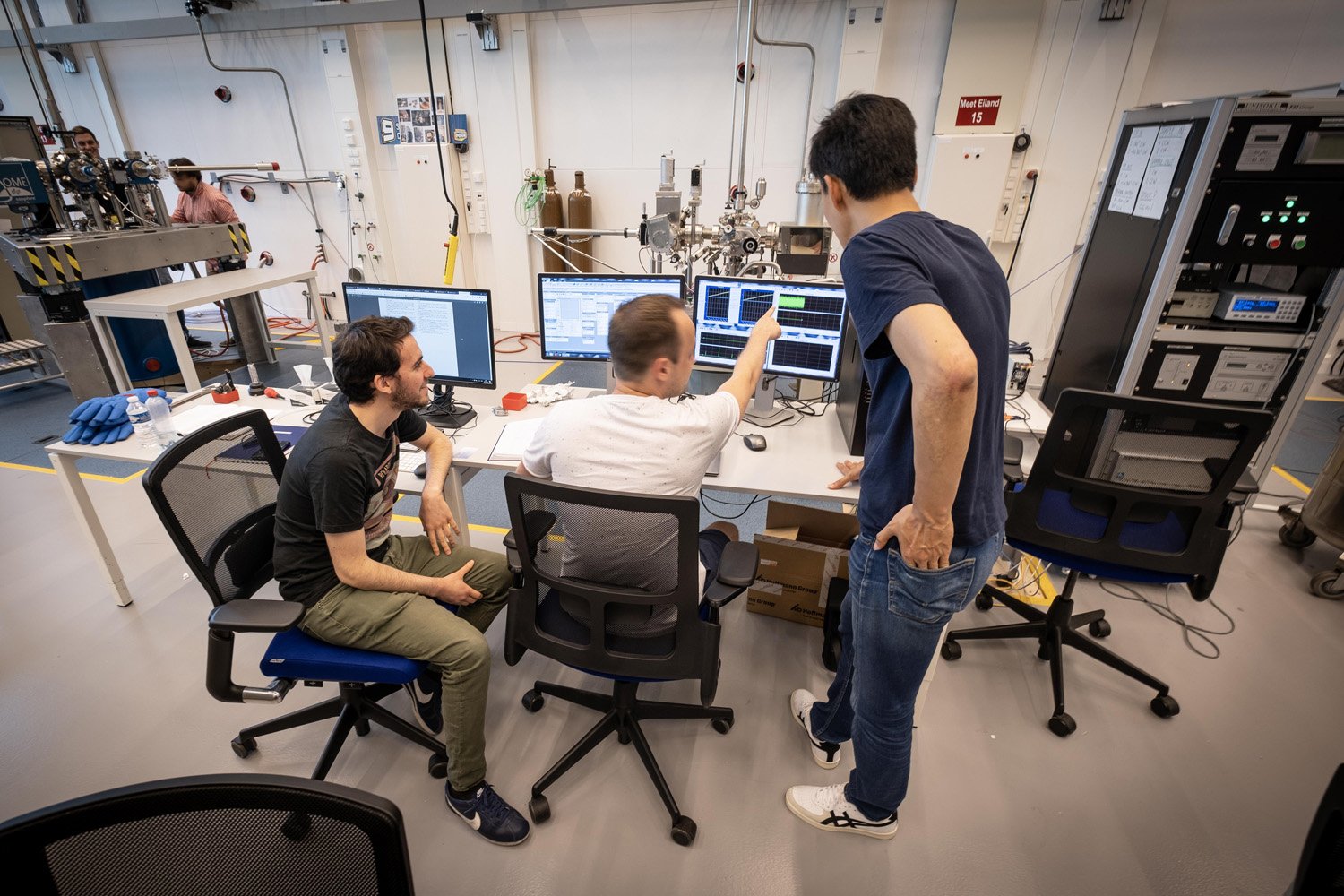‘One of the mysteries of high-superconductors is the possibility of being inhomogeneous. This means that the density of the pairs causing the superconductivity changes over space’, says physicist Milan Allan of LION, ‘we proved that, indeed, very inhomogeneous superconductors exist, by imaging them for the first time.’
The discovery netted Doohee Cho, Koen Bastiaans, Damianos Chatzopoulos and Allan a Nature paper, and can help explain the mysterious high-temperature superconductivity.
In all superconductors, an electrical current flows without any measurable resistance. That seems strange and unexpected, because normally, electrons that flow through a metal, will bump into atoms or irregularities in the crystal structure, leading to electrical resistance.

In superconductors, quantum mechanics comes into play. Electrons form pairs that can merge and form one large collective wave moving through the crystal. This collective wave is much larger than individual atoms or defects, and it will not sense them. It is a bit like the giant wave that flows through a field of sailing boats unhindered, where small waves will be stopped by individual boats.
[ad_336]
If the density of pairs is inhomogeneous, it also means that the formation of this collective wave is harder to form. This could mean that these materials would work at even higher temperature if they are more homogenous. This is one of the questions the group will continue to investigate with their collaborating material scientists.
‘In any case, understanding these materials is one of the big goals in physics, and one reason why we don’t understand these materials is that we don’t “see” one of the key properties, the density of cooper pairs’ says Cho, the postdoc working on the project, ‘for decades people talk about its inhomogeneity, but nobody has imaged it’. This has changed now, thanks to work of Allan’s group. With a special type of Scanning Tunneling Microscope, they can image the density with atomic resolution.

[rand_post]
The images, each taking about three days of scanning, showed that the density is very inhomogeneous. To exclude the possibility the this is caused by inhomogeneities in the crystal itself, the physicists imaged the atoms as well, but this yielded a completely different pattern (see the image above). ‘This shows that the inhomogeneity is not simply a consequence of the crystal lattice but instead, it is a property of the electron pairs themselves’, says Allan. With his microscope, Allan hopes to investigate other materials very soon. ‘It’s a like a new lens, a new kind of telescope. Finally, we can look at a key property of superconductivity that previously couldn’t be seen.’